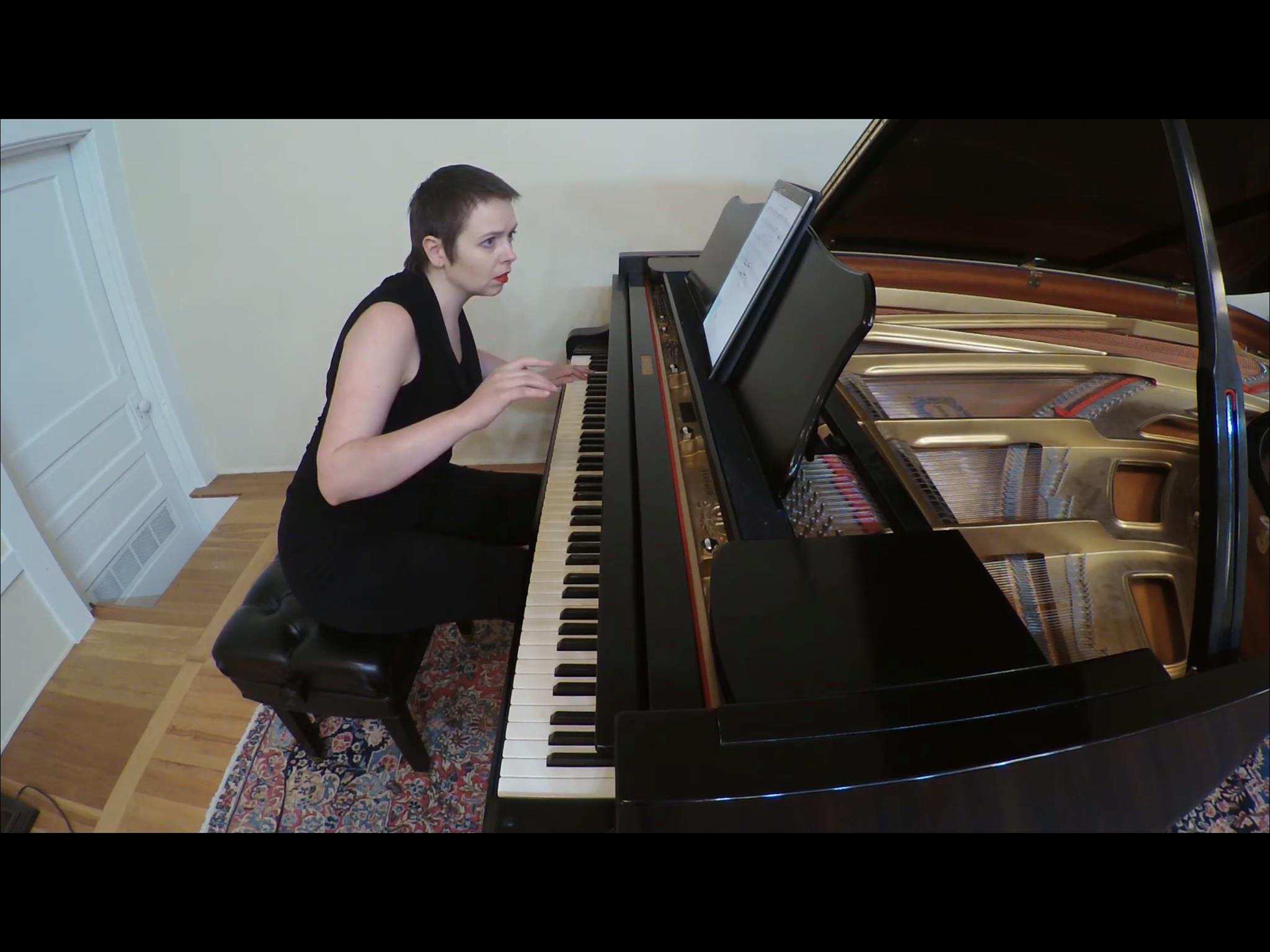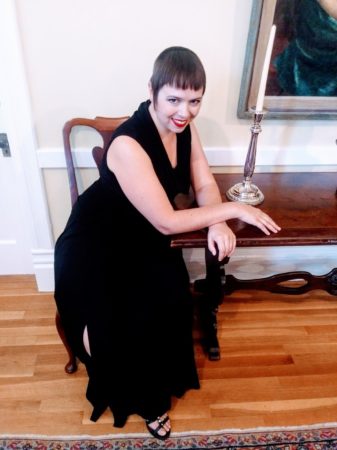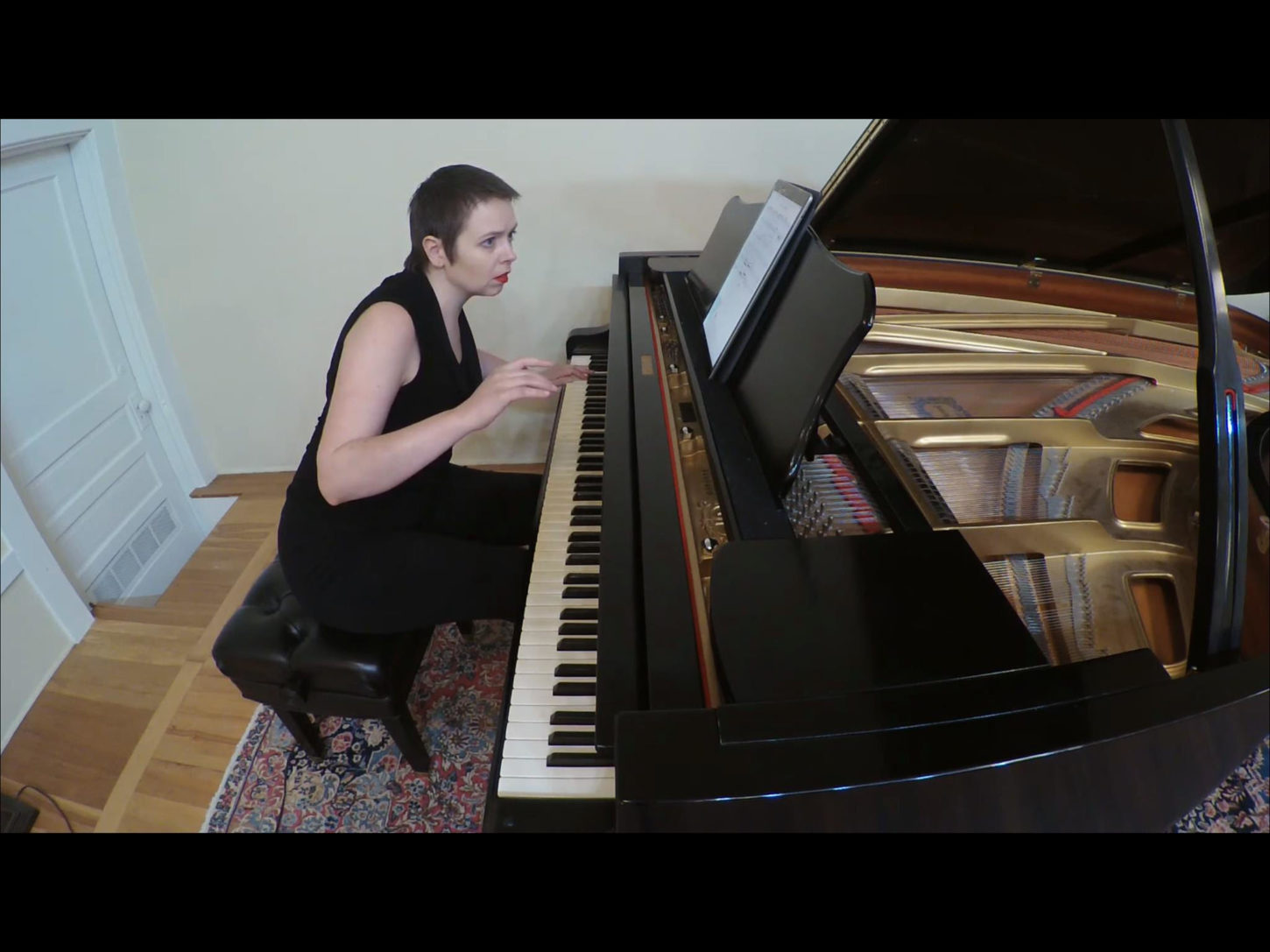Past Resident
Maeve Brophy

Pianist Maeve Brophy returned to her hometown of Memphis in 2019. Since then, she has been recruited as a substitute music director for Opera Memphis and substitute pianist for the Memphis Symphony Orchestra. She is also a member of Blueshift Ensemble and Luna Nova Ensemble, performing regularly at the Continuum and Belvedere festivals respectively. She is Head of Piano Studies at the Brown Baptist Academy of Music in Southaven, MS, Music Director of the Open Heart Spiritual Center, and a collaborative pianist at the University of Mississippi.
In 2019, she performed numerous times at The Green Room at Crosstown Arts and for the Crosstown Arthouse Film Series at Crosstown Theater. She also performed her own composition, “Elegy No. 1,” at numerous venues around Memphis. In the spring of 2020, she did a series of “Hunkering Down” solo piano jazz videos for her Youtube channel. Concurrent to her Crosstown Arts residency, she is working on a virtual Beethoven concert video for the Beethoven Club in Memphis.
She maintains a private teaching studio (currently virtual) and devotes time to promoting solo and chamber music by women, nonbinary composers, and composers of color. She is spending her residency composing, doing livestream concerts, and making solo videos of neglected solo piano music by women and nonbinary composers for her Youtube channel.
From 2011-2019, Maeve was a collaborative pianist at the Blair School of Music at Vanderbilt University in Nashville. She also taught piano at Belmont University, and she is a charter member of the Nashville based contemporary ensemble chatterbird. She is half of The Brophy Sisters, a duo with violinist Linnaea Brophy. She studied piano performance at the Manhattan School of Music, the University of Alabama at Birmingham, New England Conservatory of Music, and Texas Christian University. She currently lives in Bartlett, TN, with her daughter.
 Q&A with Maeve Brophy (from Crosstown Arts newsletter, December 3, 2020)
Q&A with Maeve Brophy (from Crosstown Arts newsletter, December 3, 2020)
Crosstown Arts resident artist Maeve Brophy is a classical and jazz pianist and composer. She maintains a private teaching studio (currently virtual) and devotes time to promoting solo and chamber music by women, nonbinary composers, and composers of color. She has made numerous solo videos of neglected solo piano music by women and nonbinary composers for her YouTube channel.
Maeve serves as the substitute music director for Opera Memphis and pianist for the Memphis Symphony Orchestra. She is also a member of Blueshift Ensemble and Luna Nova Ensemble, performing regularly at the Continuum Music Festival at Crosstown Arts and the Belvedere Chamber Music Festival. In 2019, she performed numerous times at The Green Room at Crosstown Arts and for the Crosstown Arthouse Film Series in Crosstown Theater.
Maeve is also Head of Piano Studies at the Brown Baptist Academy of Music in Southaven, former Music Director of the Open Heart Spiritual Center, and a collaborative pianist at the University of Mississippi.
Crosstown Arts registrar Jesse Butcher caught up with Maeve to discuss her love for piano, her work uncovering under-represented composers, and her collaborative process.
Jesse: You began piano lessons at age five and went on to study at the Manhattan School of Music. What initially drew you to the instrument? Was it a particular record or musician?
Maeve: I don’t remember much from the early years, other than I liked to play the piano. But when I look back at the repertoire I studied, I’m very impressed by how advanced I was at a young age. As a preteen, I became enamored by Martha Argerich, who is known for her fiery and exciting playing, as well as for being a sort of femme fatale character in classical piano lore. And as a teenager, I devoured Jessye Norman’s CDs. She was an opera singer, of course, but I was more obsessed with her than any pianist and envied all pianists who got to perform with her.
You are proficient with the work of known composers, such as Mozart, Beethoven, and Prokofiev. However, you are also fluent in work by composers who seem to have been confined outside the annals of traditional compositional history, such as Amy Beach, Florence Smith, and Nadia Boulanger. What is your research process to uncover these under-represented composers?
I was not even aware of the existence of most women and non-white composers until I began working as a collaborative pianist at Fisk University, an HBCU [historically Black colleges and universities], in 2017. From my time at Fisk, I learned about a whole body of work that is not taught at predominantly white institutions, and I started doing internet deep dives into the work of women composers, non-binary composers, and composers of color. I became quite upset and ashamed that my own education had not included this repertoire, and since then, I have set out to learn as much of it as I can. My research consists of Googling to find lists of Black composers, Latinx composers, etc., then more googling to find out what they wrote for piano and how I can get the sheet music. There are quite a few databases out there now as more and more musicians and researchers become interested in this repertoire.
Your most recent performances have been streamed live on YouTube and other social media rather than recorded and streamed on an audio-only site. I am interested in when the visual element appeared in your research and what that means for further variations on this project.
YouTube is where people go to learn about classical music, and this was true before the pandemic. When I started researching neglected repertoire, about 50% of the pieces I would learn about had no YouTube videos. In the past couple of years, this has changed as interest has grown, but there are still a lot of gaps to be filled. Young people who are just learning about these pieces turn to YouTube, and I have already gotten a couple comments from people who were grateful that I posted a video of a particular piece, because in some cases, mine is the only video that exists. I will continue to make my videos after my residency has ended as well.
In the intense period of research and performance during your residency, have you found inspiration in any places that are unexpected?
I have really found inspiration from the other artist residents. We have Zoom sessions where we share our work with each other, and I really admire what all of them are doing. Laura Ann, Carl, Devan, and Lexus are extraordinarily talented, and I hear the universal in their work, as well as experiences and ideas that are not mine but enrich my education as an artist and human. I am grateful to be in community with them.
You also perform with the Luna Nova Ensemble, Blueshift Ensemble, chatterbird, and The Brophy Sisters. How do you adapt your playing to the collaborative process?
I was fortunate to play chamber music as a teenager and to be told to always, always listen and be continually responsive to others who are playing at the same time as you. I took this advice to heart, and it improved my collaborative playing. Then in my 20s, I had a “metronome epiphany” after neglecting my metronome for years, and to this day, I constantly have a metronome going while I practice. That way I have a strong internal sense of rhythm that I bring to rehearsal, and there is an interplay that happens between establishing a pulse when needed and adapting to your collaborators.
Thanks so much for taking your time to speak with us. We look forward to seeing more of your YouTube videos!

